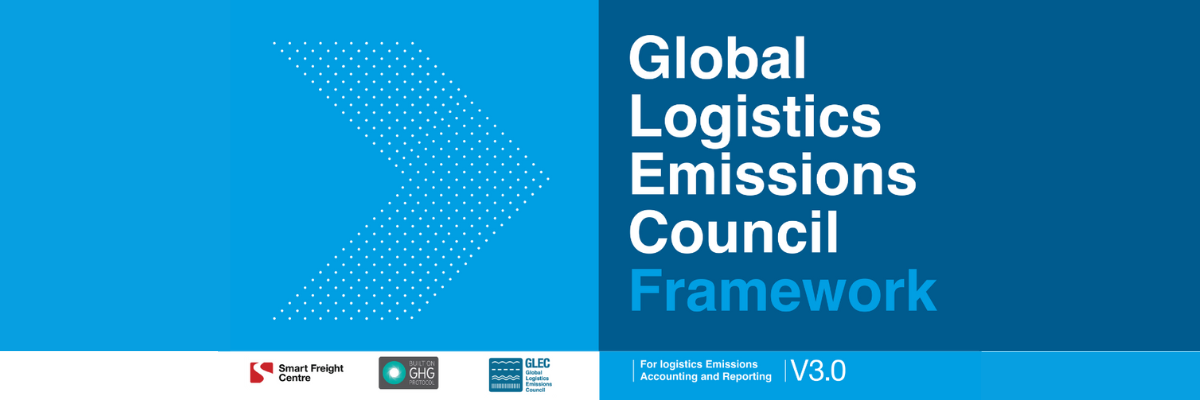Reducing supply chain emissions is no longer an isolated initiative but an operational program involving processes, data, and partners. The adoption of the glec framework and iso 14083 makes it possible to move from rough estimates to comparable and verifiable measurements, turning sustainable logistics into a competitive advantage.

What is the GLEC Framework and why is it important for sustainable logistics
The glec framework is the industry’s reference guideline for calculating and reporting greenhouse gas emissions in multimodal logistics. Developed by Smart Freight Centre, it is the technical foundation on which iso 14083 was built and remains the main tool for implementing it consistently in daily operations.
The update to version 3.0 and subsequent refinements have consolidated full alignment with the international standard, providing an updated and shared method for the transport supply chain.
ISO 14083: the international standard for emissions measurement
iso 14083 defines a common methodology for the quantification and reporting of greenhouse gas emissions generated by transport chain operations, both passenger and freight, covering multimodal transport and intermediate stages such as terminals and transshipment. The goal is to ensure comparable results across companies, routes, and modes, enabling governance, audits, and continuous improvement.
The standard has replaced and updated previous European references, bringing a higher level of alignment to the global logistics chain.
How to apply the GLEC Framework and ISO 14083 to the supply chain
Applying glec framework and iso 14083 means building a “digital thread” between operational data and emissions calculation. In practice, it starts from the activity data available in company and partner systems (orders, weights, volumes, distances, fuel consumption, vehicle efficiency, load factor), selecting the calculation method most appropriate to the level of detail, qualifying sources with data quality criteria, and making assumptions and emission factors traceable.
The result is a reliable baseline on which to set reduction targets, plan initiatives, and demonstrate progress with metrics that can be verified in an audit. The glec framework provides exactly these operational instructions and serves as the implementation guide for iso 14083.
Digital tools and transport monitoring
The quality of measurement depends on system integration. In Hubrise, sustainable supply chain management centralizes rules and priorities across channels, ERP, and WMS, creating the data layer on which to calculate environmental, service, and cost KPIs in a consistent and auditable way.
e-commerce logistics solutions automate labeling, carrier selection, and tracking, allowing each shipment to be linked with the data needed for emissions accounting and to verify the impact of initiatives such as load factor optimization or mode shift. A well-designed omnichannel logistics strategy distributes flows between warehouses and stores, reducing unnecessary routes and improving the first-attempt delivery rate.

The benefits of sustainable logistics for companies
When sustainable logistics is based on glec framework and iso 14083, the benefits affect both the bottom line and reputation. Standardization makes data comparable across suppliers and countries, supports partner selection, and facilitates ESG reporting and the demonstration of progress toward climate goals. On the operational side, visibility of emissions by route and mode helps select more efficient intermodal corridors, improve load factor and balance, and reduce returns and empty trips. On the commercial side, certifiable transparency becomes a differentiating factor and enables participation in tenders that require internationally recognized metrics.
The role of technology and logistics partners
The shift from theory to practice requires strong collaboration along the supply chain. Freight forwarders and carriers must provide complete and consistent datasets; brands and e-commerce operators must integrate systems and processes so that measurement and improvement become part of the operational cycle. Glec framework and iso 14083 were designed precisely to create a common language among transport stakeholders and to define what to measure, how to calculate it, and how to report it in a comparable way.
Choosing partners that adopt these practices accelerates time-to-value: the rollout of pilot projects, the progressive replacement of average factors with primary data, and the use of shared dashboards quickly lead to real emission reductions and more informed decisions on logistics investments.
Sustainable logistics measured with glec framework and iso 14083 makes it possible to move from generic intentions to quantified and verifiable improvements. With Hubrise, companies can orchestrate data and processes across orders, inventory, and transport, linking the decarbonization strategy to operational results.